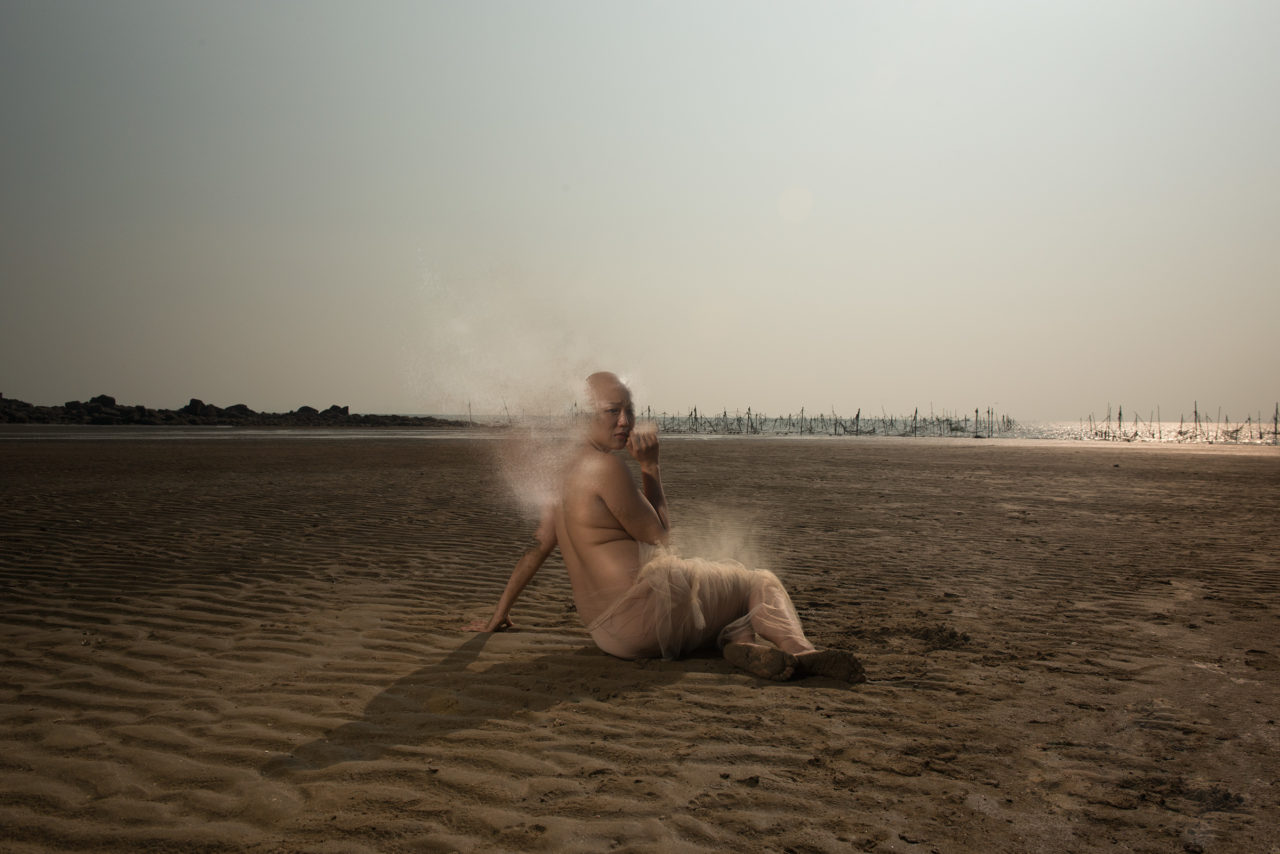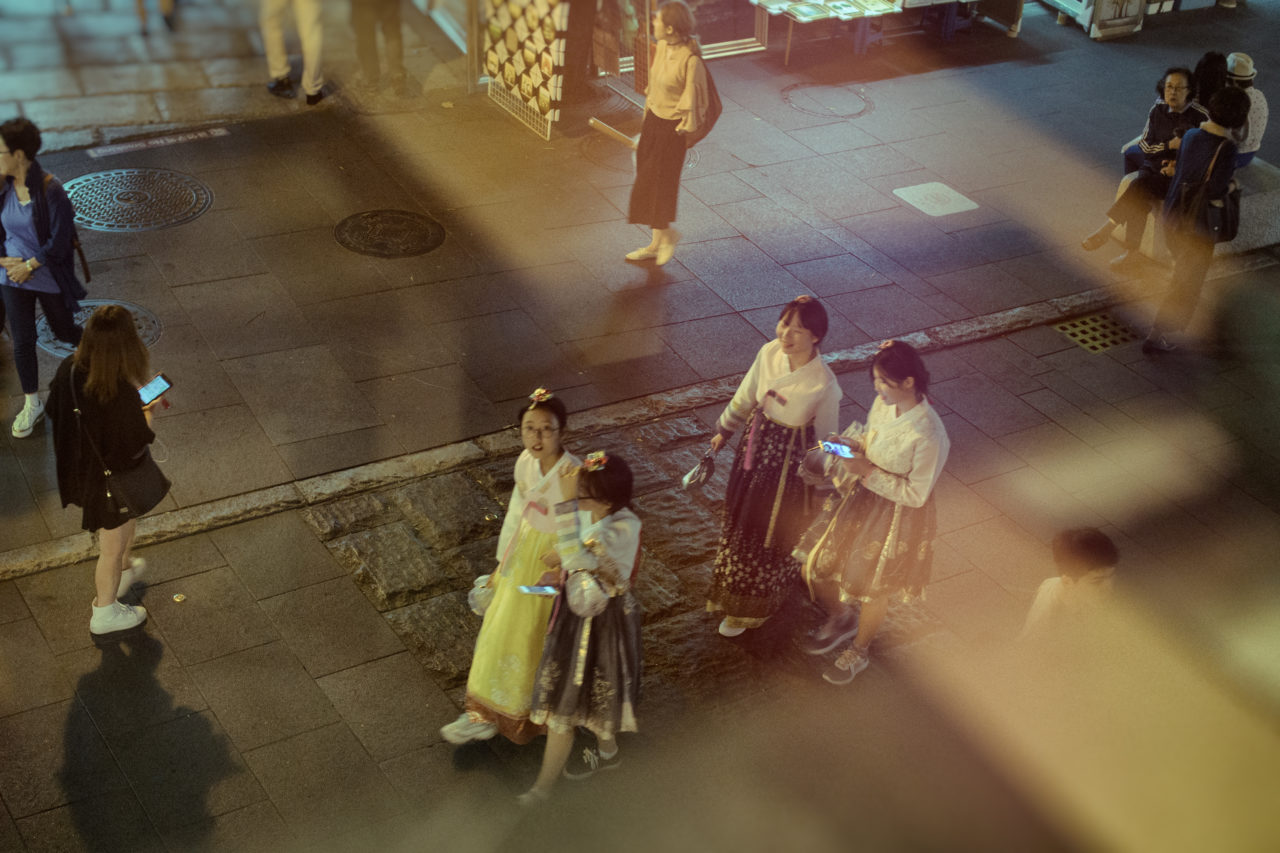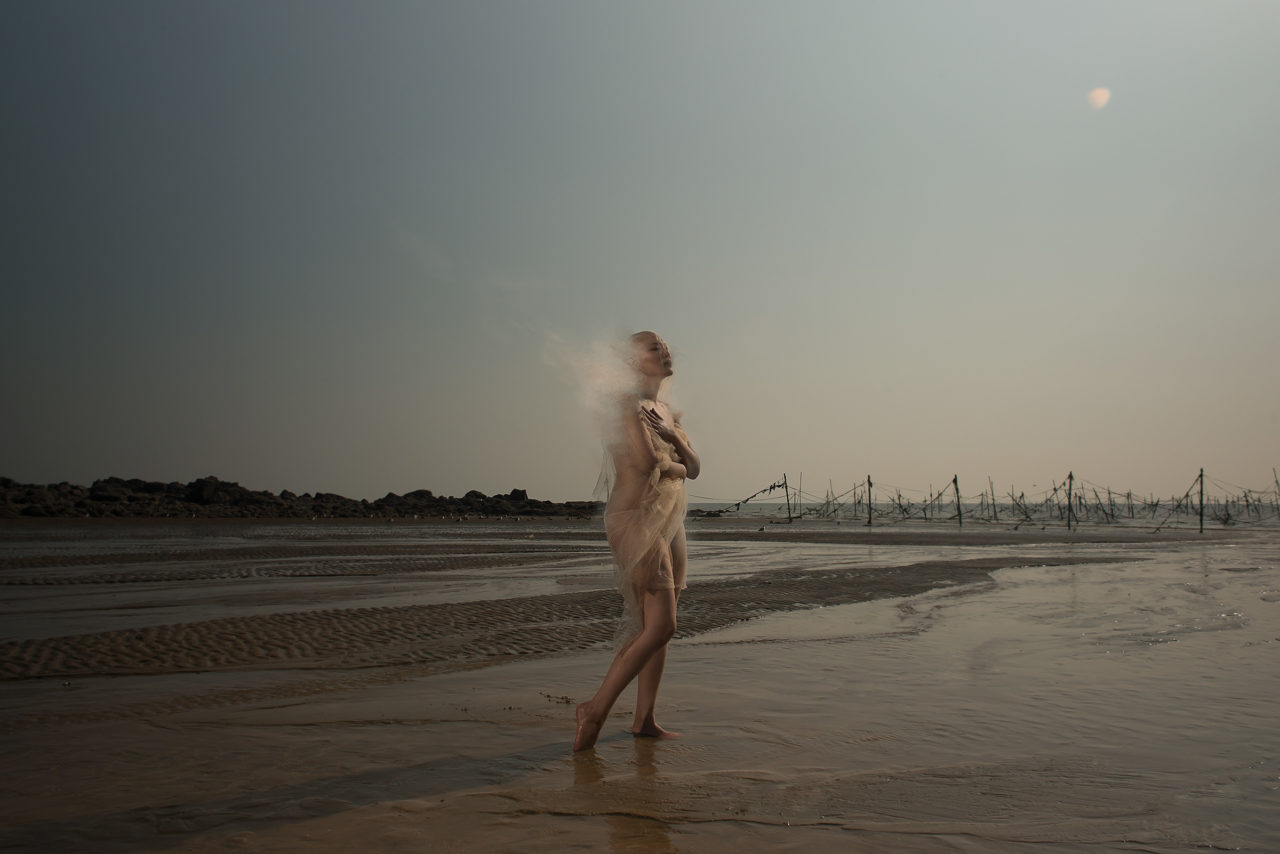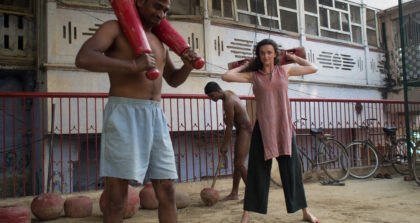In Spirit: Damian Siqueiros, Songs of the Inner Chamber

Seoul, September 14th: I met with Damian at the airport. He prepared me a Korean puffed-rice tea to drink on route in the subway that takes us to Goyang, where is located the artist’s residence he has lived for the last 3 months.
I am impressed by the ease with which he travels in the public transit and communicates in this country where everything is written in Korean and almost nobody speaks English. In Goyang, the residence is located between a few houses, agricultural fields and a forest. The room is uncluttered, has high ceilings, and large windows that overlook the backyard. The calm is conducive to our meditative exchanges that will take place for the next 10 days.
Damian is in South Korea to work with dancers. The theme: exploring the notion of gender in this Asian culture. Several months before his trip, he studied Korean culture, the history of the country, its language, tales, mythology and artists. All these elements will be used to construct his visual and scenographic references. Poet of the image, it is through photography that Damian approaches various subjects and engages his discourse on the genres. He had already touched on this theme in his series such as To russia with love, which featured couples of homosexual Russian celebrities, TRANSformation, a series of images that unveil bodies without gender in which masculine and feminine traits coexist, or 10×10, 10 portraits of LGBT artists. Today, it crosses two continents to penetrate the reality of an Asian world and continue its excursion.

If Damian normally organizes his photo sessions in a very sophisticated way and involves body artists to actualize his ideas, then in Korea it lends itself to a different game. Outside his studio, with limited equipment and models who converse almost exclusively only Korean, the situation will invite him to more improvisation. The photos that emerge from these series testify to this intercultural encounter and this journey: “I know that my pictures are not perfect, here and there there are things that I could have done better if I had worked in my studio with all my equipment … but at the same time, I think that each photo is also the reflection of this journey, with its magical and wobbly moments, and that’s what I want to talk about.

Sabina Sojin Yoon has alopecia. Damian met her at a performance on women imprisoned during the Japanese occupation, where he asks her if she would pose for him and she agreed right away. We find ourselves at the metro station; by car we go to the beach where, in the open air, we set up to take the photos. Sabina poses as for a performance, free in her body and in her movements. Her message is clear. She shows that even devoid of stereotypical feminine traits such as hair – a veritable symbol of femininity in many cultures – she feels no less womanly. Between the gaze of others and the one she casts on herself, with the years she has learned to embrace alopecia. She has stopped wearing wigs and assumes her physique and the nonconforming beauty that she exhibits. Her speech lives within her body, questioning the stereotypes: without a feminine attribute, am I less female? Do female attributes herald acting like a typical woman, to mold oneself in the expectations that a given society will have of its women? With the dancers, we continue to explore these questions.

In the intimate space of the house, perhaps even from the bedroom as suggested by the screens, the dancer wears a white dress, i, that women wear underneath their traditional Korean dresses (hanbok), and a light blouse on top called jeoggori.
In Goyan, when Damian presents this photo to the other artists in the residence and the director of the center, the latter is indignant. Taken back to her own cultural memories and probably her subconscious, outraged inner identity, she tells Damian that “he has no right to represent the Korean woman in this way, in her intimacy and by objectifying her in such a way, him, a foreigner, who knows nothing of this culture “.
In the observation of the culture of another there is a cold emotional impact, but looking at one’s own culture perceived by the other is sometimes confronting. It is this episode that drives Damian to continue exploring his subject/project by looking further at the significance and the issues that suddenly seem to him to be much more present and closer, for he meets them at the very heart of the artistic community.
A few weeks later, I accompanied Damian to a meeting with the artists. The goal is to ask them questions, to give them a voice in the process of creation. Artists in their mid to late 30s, whose relationship to their art has had time to be thought and matured. Their commitment, their reflection in the face of what they express through their movement, is charged with meaning. Damian came to Korea with a project in mind. When he shared it with the artists, he asks them to interpret it with their bodies, their feelings, their history, and to add their own sensitivity. The first rejection of the director of the residence, therefore, became a boost to the project, giving it another level of complexity: the gaze of Korea against the words of its artists. The dancers speak.
“Yes, I knew it was just the undergarment of the dress. I do not want to conform to the image of the traditional woman. It is a transgression, to break the framework of conformity. Korean culture is hidden, there are many things we do not want to talk about. I wanted to show, by this symbol, what is normally hidden” expressed Kyong Sun Seo. The unveiling of the intimate is revealing the emotion and the underlying thoughts hidden in the world by conformity. Transgression is a powerful grasp, which, when expressed with the softness of visual poetry that presents beauty, can be even more disarming.
However, in this transgression of the traditional dress, the contemporary dancer begins to approach traditional dance movements. Questioning the traditional image of woman, she does not reject it, on the contrary, she rewrites it with her body, free in the choice to be and feel, far from an image imposed by society.

Traditional dancer A Reum Choi, on the other hand, will take the extreme reverse by leaving the classic form to give to movements a much more contemporary gesture. It is important to break codes, “even when I break the tradition, this is still me, I am, still”. She recalls Woman in her carnal function by telling us her experience on the day of her session with Damian: “That morning, when I woke up, I had my menstruation. I was not at the best of my energy for the photo session. Yet, on arriving, Damian proposed to me to create using a red fabric, and the sense started to appear: the link between the woman and the body, the red blood flowing that reminds her once a month she is a woman. It was the symbol of what I was that day, how I felt, what my body reminded me of. ”
In this image, we leave the space of the private apartment, for a symbol of nature eminently feminine and very related to the Korean mythology. Human beings, before being socially constructed and put into frames, are before all beings of emotion. Nature is the magic space that reappears every season, where the cycle of life is perpetuated and social settings have no place. An immensity of mysteries in which man is not animal, but, on the contrary, rises in the spiritual spheres that Nature can teach him.

It is also this nature that Damian will choose for Jungmin, a performer and living model for the artists. In the photographs, sometimes animal, sometimes woman, the spectator can feel the intensity of the inner world and spaces that cross this interpreter. In the room where we meet, Jungmin is silent. He is the last to speak and his voice is very calm and almost shy, “at one point I felt like nature. Its strength then its vulnerability. I’m not gay, yet sometimes I can feel like a woman. That day, I felt the feminine in me. ”
The morning of my departure, in the same forest we return to have a photo session with Jungmin. This time I pose with him, without words since we do not speak the same language. It is a meeting from being to being, from artists to artists, from man to woman, from culture to culture. I become the masculine energy, he becomes the feminine one. We let the inspiration guide us. An encounter as a conclusion on this journey, two intersecting glances, that of the East and the West.


Damian and the Rhetoric of Beauty
In each of these series, the beauty that jumps to the eyes, whatever the body or the theme, explodes all the frames. For Damian, it is a non-aggressive active rhetoric that he chooses, which questions the preconceived ideas posed by society that exist behind the names “man” or “woman”, limiting the individual who must be defined by one sex or the other, and thus conform to all the stereotypes attached to its the label. The rhetoric of beauty in Damian’s work allows to destigmatize the fear of difference, of incomprehension, and to lift the veil on the human quality of merely being before the idea of a category is created .
From Canada to Korea, passing through Mexico and France, Damian invites us to think outside the box. It softens the minds and thus struggles, actively, through beauty, against the misunderstanding often felt when confronting the other’s differences.
Through the emotion that the images convey, the viewer is brought back to his own intimacy. What is more intimate and more common to all human beings than an emotion? Intimate experiences have no category. Whether male or female, old or young, large or small, homosexual, heterosexual, bisexual, cissexual or transsexual, the intimacy of emotion is the common factor to each individual. It is through this uniqueness that Damian brings the differences closer together and proves at the same time that there are as many labels as there are experiences, when one refers to what is felt instead what is labelled.








View Comments
No Comments (Hide)